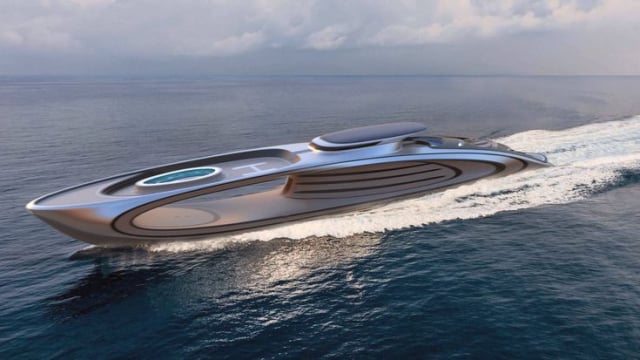Taken from El Confidencial
The boats of the future are set to revolutionize boating with impressive technological advances and innovative designs . One of the most promising technologies is automation and artificial intelligence , which will allow autonomous ships to operate. These ships will be able to navigate without human intervention, using advanced sensor systems and algorithms to detect and avoid obstacles, optimize routes and reduce fuel consumption . This change will not only increase operational efficiency , but will also improve safety by minimizing the risk of human error.
Sustainability will be a key factor in the development of the ships of the future. The maritime industry is increasingly adopting renewable energy sources, such as solar and wind power , to reduce dependence on fossil fuels. In addition, hybrid and electric propulsion systems are being developed that will minimize polluting emissions. New wastewater treatment and waste management technologies will also play a crucial role, ensuring ships are more environmentally friendly.
In terms of materials, it is anticipated that the ships of the future will be built with advanced composites and sustainable materials . Light but durable materials, such as aluminum alloys and carbon fiber reinforced polymers , will allow the design of more efficient and resistant boats. These materials will not only reduce the weight of ships , thereby improving their performance and energy efficiency, but will also increase their useful life and reduce maintenance costs.
The design of future ships will also undergo a significant transformation. The designs are expected to be more aerodynamic and optimized to reduce water resistance and improve stability . Cabins and cargo areas will be designed to maximize space and functionality, incorporating advanced space management technology . Furthermore, the integration of next-generation communication and navigation systems will ensure that vessels are always connected and can share information in real time, thus improving coordination and safety on global shipping routes .
Some companies that are already presenting their prototypes of boats of the future are:
- Chantiers de l'Atlantique: It is a leading French shipyard in the construction of cruise ships and other large-scale vessels. This project conceptualizes a ship that combines advanced technologies and sustainable design to minimize environmental impact and improve energy efficiency. Formerly known as STX Europe, this company is focused on its project called Eoseas which is designed to use a combination of wind, solar and biogas energy for propulsion. This includes five masts fitted with rigid sails that capture wind energy, significantly reducing the use of fossil fuels. In addition, the ship incorporates solar panels on the deck to take advantage of the sun's energy and biogas as an alternative fuel. The hull of the Eoseas is designed to be aerodynamic and minimize friction, allowing the cruise ship to move more easily through the water. The cruise includes smart technology to enhance the passenger experience, such as automated cabin management systems, high-speed internet connectivity and mobile applications to facilitate navigation and access to onboard services. Additionally, it is conceptualized to offer a luxury experience to passengers, with spacious and well-designed spaces that include common areas, restaurants, swimming pools and entertainment areas. The layout and interior design are designed to maximize comfort and space efficiency.
One of the most significant aspects of the project is that it is equipped with energy recovery systems that harness waste heat from the engines and other onboard systems to generate additional electricity. This not only improves energy efficiency, but also reduces dependence on external energy sources. - Hurtigruten Norway: With the ZEA (Zero Emission Activity) Cruise project, the Norwegian company seeks to develop a zero-emission expedition cruise , which is part of its commitment to sustainability and environmental conservation. This project is aimed at designing and building a cruise ship that operates completely without emissions, using advanced technologies and renewable energy sources to minimize environmental impact. Additionally, Hurtigruten plans to use the ZEA as a platform for environmental education. Passengers will have the opportunity to learn about the sustainable technologies used on the ship and the importance of environmental conservation . Through onboard programs and activities, the company hopes to inspire its guests to adopt more sustainable practices in their own lives . The main characteristics of the project are that the ZEA cruise ship will be equipped with a completely electric propulsion system . It will use advanced high-capacity batteries that can be recharged using renewable energy. It also highlights its integration of multiple renewable energy sources . The cruise ship will be equipped with solar panels and wind turbines that will generate clean energy to power the ship. The ZEA cruise ship's hull and superstructure design will be optimized to reduce water resistance and improve energy efficiency . This includes an aerodynamic design that minimizes energy consumption during navigation. Finally, the ZEA will be equipped with state-of-the-art waste management and wastewater treatment systems .
These are some companies that are leading the transformation of the yachting and cruise industry towards a more sustainable and technologically advanced future. Its efforts in innovation and sustainability are setting new standards for tourism vessels, offering cleaner, more efficient and environmentally friendly boating experiences.


